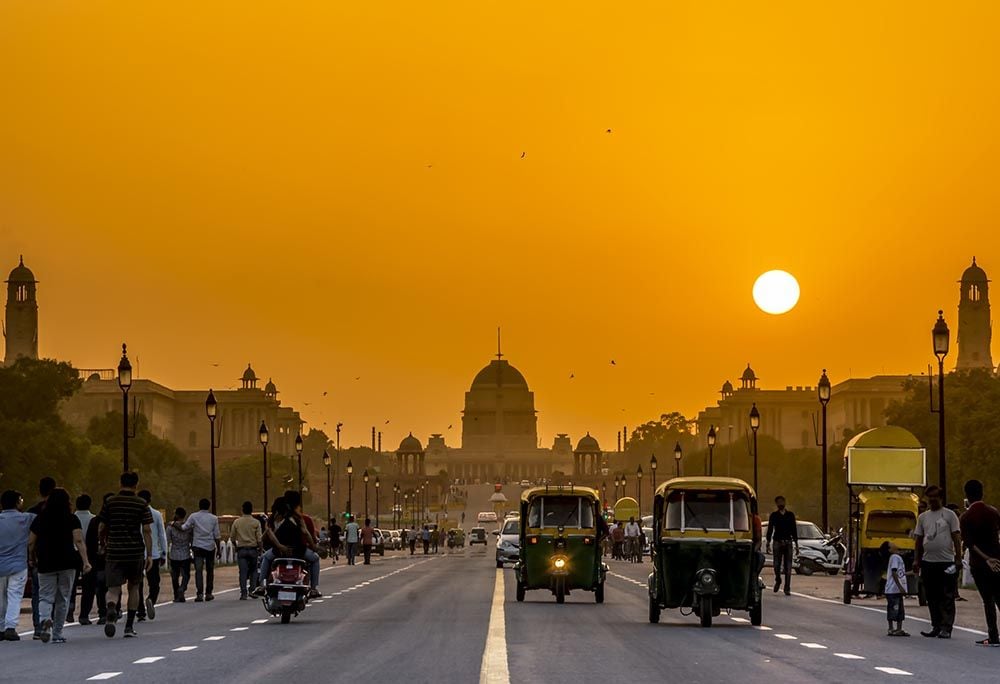The Indian Rupee Remains Threatened by RBI Feud with Government
- Written by: James Skinner
-

© Kriangkrai, Adobe Stock
- INR gets midterms lift from record lows but RBI feud threatens gains.
- Gov to dial up pressure on RBI over debt rules, dividends, on Nov 19.
- Independence threat risks driving borrowing costs higher, INR lower.
The Rupee recovered further from earlier record lows Wednesday, aided by a weakening U.S. Dollar, but an ongoing feud between the Reserve Bank of India (RBI) and government means the currency is still vulnerable to losses.
Tuesday's midterm elections in the U.S. saw the Republican Party lose control of the House of Representatives, which might hamper any future efforts toby the Trump administration to pump up the economy through further fiscal stimulus.
This put the Dollar on its back foot and gave emerging world currencies some welcome respite Wednesday but the Indian Rupee has more than a resurgent U.S. currency to worry about.
"It may be Diwali, but the reported tension between the RBI and the government isn’t taking a break," notes Sue Trinh, head of Asia FX strategy at RBC Capital Markets.
Reuters reported Wednesday the government intends to continue pressuring the Reserve Bank to relax curbs it recently imposed on some forms of lending and to use currency reserves to pay higher dividends to the Treasury.
The report says government officials will use the RBI meeting on November 19 to dial up pressure on the bank to toe the Narendra Modi administration's line.
This is just days after the government used Section 7 of the Reserve Bank Act 1934 to begin discussions that could yet culminate in a direct instruction requiring the central bank to do the government's bidding.
RBI officials have framed the government's behaviour as a threat to the bank's independence and at least one has lashed out against it in a public speech that drew a formal response from the Finance Ministry.
The USD/INR rate was quoted 0.70% lower at 72.43 Wednesday, denoting a weaker Dollar and stronger Rupee that pulled the exchange rate back from record highs, although it is still up by 13.5% for 2018.
The Pound-to-Rupee rate was 0.39% lower at 95.23 but has gained more than 9% in 2018. India's Rupee has been left damaged by a series of external headwinds this year.
"The market moves come as little surprise. After all, at the heart of the matter is the independence of the central bank," says Shilan Shah, a senior economist at Capital Economics.
Financial markets, particularly bond and currency markets, have a severe aversion to political meddling in the affairs of central banks given the risk that politically-motivated decisions can pose to creditors of sovereign governments.
Governments can easily be tempted to pressure central banks into keeping interest rates low for electoral reasons, but this kind of decision almost always gives rise to market fears over the inflation outlook.
There haven't been any allegations that the government is attempting to meddle with the bank's interest rate policy but the nature and timing of the intervention, which comes ahead of an election year, suggest it is politically motivated.
Ministers are reported to be pushing the RBI to relax its "Prompt Corrective Action (PCA) framework" for cleaning up bad loans in the financial sector in an effort to stimulate the economy by encouraging more lending.
Officials are also widely reported to be angling for the RBI to use currency reserves to finance higher dividend payments to the government, which are said to be necessary for government to balance its books.
"Whatever the rights and wrongs of the specific disputes, it has not escaped notice that the government’s positions – whether on easing credit to small firms or the RBI making larger transfers to the state – would tend to boost the economy at a time when the central bank is trying to tighten," Shah adds.
The Reserve Bank has raised its interest rate twice in 2018, taking the base rate to 6.5%, citing inflation developments that have at times threatened to see the consumer price index rise above its target range. Analysts are divided over whether it will hike again any time soon although Shah is forecasting one more rate rise in "this cycle".
India's central bank is required to keep inflation at 4%, plus or minus a 2% deviation either side. And while the main consumer price index sat at 3.8% in September, the core rate of inflation that ignores food prices and other volatile commodity items continued to threaten a challenge of the 6% level.
"Markets are likely to remain under pressure as long as the tensions persist. The RBI has been one of India’s most credible institutions over the past five years – reflected in the fact that inflation expectations have dropped to single digits," says Shah. "Any erosion of independence could permanently reverse this trend and ultimately push inflation up."
If the RBI's independence is truly undermined or inflation rises persistently because of a perceived threat to independence, then India's impressive economic growth rate would be threatened and borrowing costs for the government would rise.
Advertisement
Bank-beating exchange rates. Get up to 5% more foreign exchange by using a specialist provider to get closer to the real market rate and avoid the gaping spreads charged by your bank when providing currency. Learn more here
